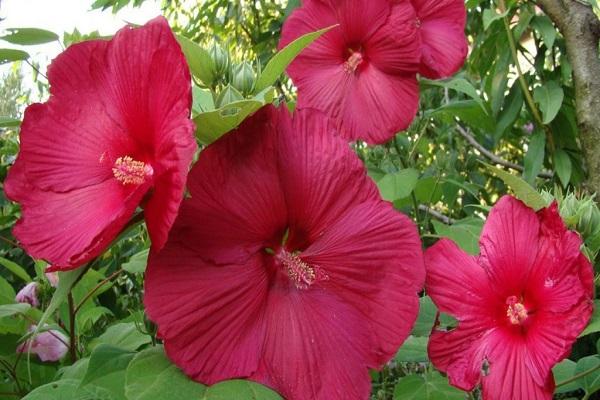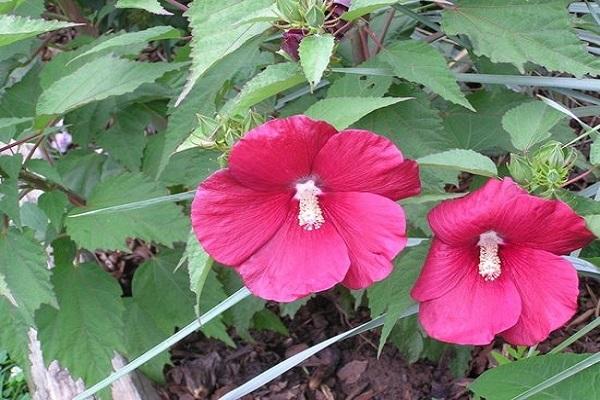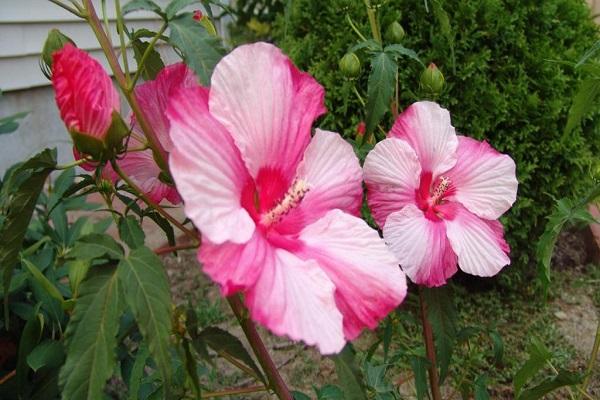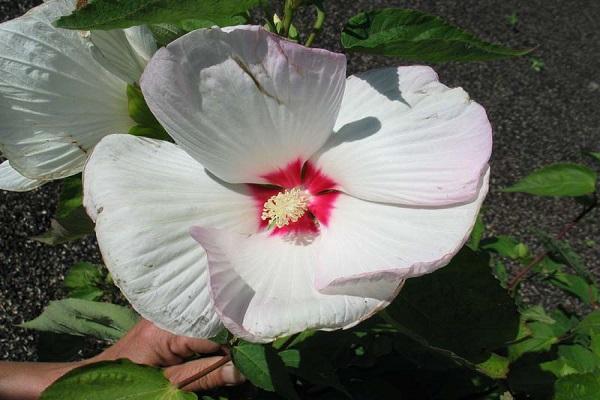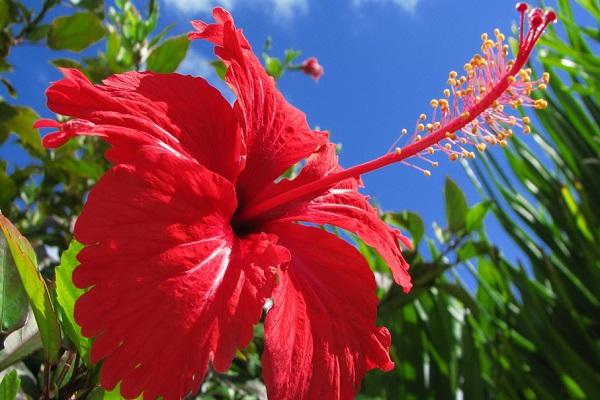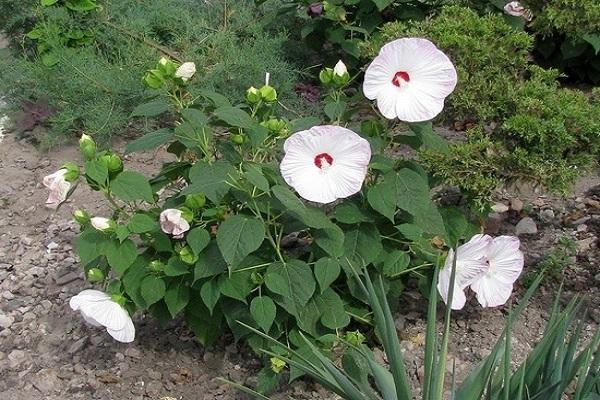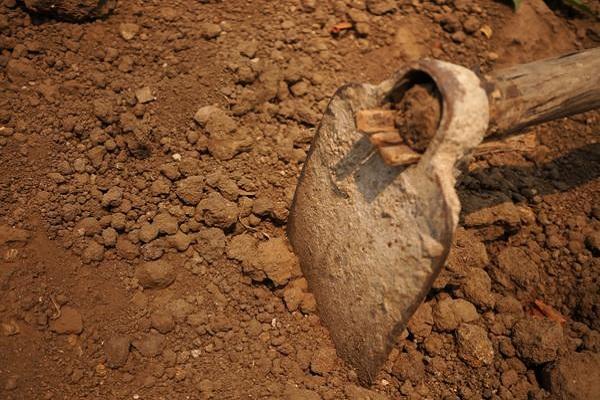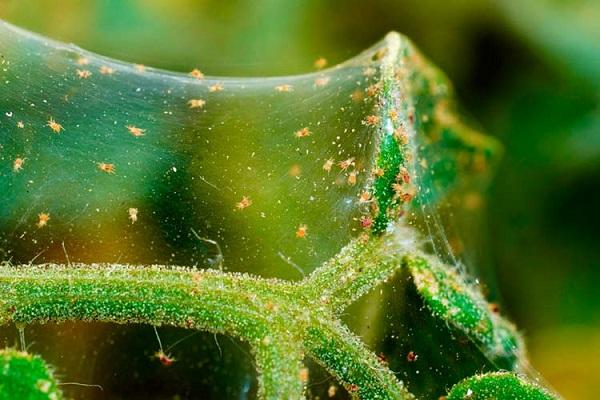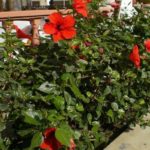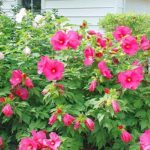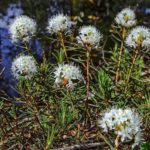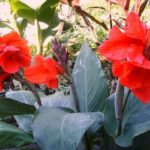Growing flowers appeals to many summer residents. It is very difficult to choose from the variety presented by manufacturers. Before you plant something, you need to read the description and characteristics. Swamp hibiscus is an unpretentious plant. With proper care, it will delight you with its abundant flowering for a long time.
- Description and characteristics of swamp hibiscus
- Reproduction
- Landing rules
- Seed preparation
- Sowing seedlings
- Choosing a landing site
- Transplanting seedlings to a permanent place
- Features of caring for swamp hibiscus
- Temperature and lighting
- Watering, mulching and fertilizing
- Bush formation and transplantation
- Wintering
- Diseases and pests: control methods
- Applications of plants
Description and characteristics of swamp hibiscus
There are about 300 known species of hibiscus flowers. The variety is loved by flower growers. The reason is that it is grown at home, in greenhouses and outside in the garden. When favorable conditions are created, swamp hibiscus opens large flowers that are pleasing to the eye all year round.
Characteristics:
- 3 m height in nature;
- excellent development of the root system;
- heart-shaped leaf;
- flowering from early spring to autumn;
- shades of red, lilac, violet;
- one flower remains open for 1 day, then falls off;
- diameter 15 cm;
- After the flower falls, a seed box is formed.
Having planted swamp hibiscus, the summer resident understands that the crop is unpretentious, and if all the requirements are met, it will delight you with beautiful flowers.
Reproduction
Two methods are used:
- cuttings;
- seeds.
First way:
- Cut branches and place them in wet sand or water.
- They are waiting for the roots to appear.
- Afterwards they are planted in separate containers, pots or in a permanent place.
- Transplanted into open ground in June.
Second way:
- Planting material is soaked for 12 hours in a growth stimulator.
- Then sow into the prepared mixture.
- Cover with polyethylene and put in a warm, dark place.
- After germination, place on a sunny windowsill and grow until the 3rd leaf is formed.
- Afterwards the seedlings are planted separately.
Landing rules
It is necessary to plant the hibiscus correctly, then it will bloom and grow profusely. Following the recommendations will help you get a strong plant.
Seed preparation
Proper cultivation begins with the preparation of planting material. To do this, the seeds are soaked in a stimulant. After 12 hours in the solution, dry it.
Sowing seedlings
A nutritious soil mixture is prepared and disinfected by watering a solution of potassium permanganate.The composition is as follows:
- 4 parts of turf land;
- 3 parts leaf soil;
- 1 part humus;
- 1 part river sand.
A drainage layer is formed at the bottom. Use broken brick, expanded clay or other similar material.
Then they make furrows and plant seeds in them. They are spread over the surface and pressed a little. No need to sprinkle.
The emerging sprouts are carefully watered with water, preventing the plants from drying out. Swamp hibiscus loves moisture. Plants are adapted to slightly waterlogged soil. The soil must be loosened periodically; the root system needs air.
Choosing a landing site
As the name of the subspecies suggests, swamp hibiscus loves a lot of moisture. Planted in a wetland. If there is no such place, then they are planted near bodies of water. There should be no strong shading, as plants need sunlight.
Transplanting seedlings to a permanent place
In summer, the flower is planted in open ground. To do this, grown seedlings are planted at a distance of 50 cm from each other. Humus or complex fertilizers are poured into the bottom of the hole.
Features of caring for swamp hibiscus
It’s not enough to just plant plants in the ground; you need to take care of it. The duration of flowering, the abundance and size of flowers depends on how correctly this is done.
Temperature and lighting
The optimal temperature for plant growth and flowering is +20-24 ⁰С. In winter, when grown indoors or in greenhouses, the temperature is set at +17 ⁰С. It should not fall below + 15 ⁰С, in which case the hibiscus will begin to shed its ovary and leaves.
Plants need diffused light, as direct rays of the sun can cause burns. In summer there is enough lighting, in winter additional lighting is provided.
If there is not enough light, swamp hibiscus stops flowering.
Watering, mulching and fertilizing
Swamp hibiscus needs water for proper growth and abundant flowering. Therefore, you need to ensure that the flowers do not dry out. Lack of moisture affects plants. It sheds buds and leaves.
Mulching will help retain moisture in the soil; for this, plant residues, sawdust and other available material are used.
Fertilizers help plants form flower buds. If there is a lack of nutrients in the soil, plants stop growing and forming ovaries.
It is recommended to water the plants with fertilizers containing nitrogen in the summer. In winter, hibiscus needs potassium and phosphorus. If you apply fertilizers in a timely manner, the plants will not get sick.
Bush formation and transplantation
Pruning the bush is recommended in order to stimulate the plants to additional shoot growth. This is good because the flowers form at the ends of the branches.
Swamp hibiscus is formed at any time. After pruning, it is recommended to give the plants a rest. Place in a dark place, limit watering slightly if they are grown in pots.
Responds positively to pinching. In early spring, the crown and ends of young shoots are removed. This stimulates the growth of additional shoots.
Those branches that extend beyond the crown are shortened. A beautiful, even and neat plant is formed.
It is advisable to delete the entire branch if it:
- dried up;
- is a root shoot;
- sick or deformed;
- grows inside the crown;
- grows parallel to the bush.
When carrying out the formation, it is necessary to take into account one feature of hibiscus. 3-4 branches are removed at a time, no more.
Adult flowers are replanted once every 2-3 years.It is advisable to replant young ones every year. At the same time, try not to disturb the roots of the hibiscus. It is replanted together with a large lump of earth. Then sprinkle the soil with a nutrient mixture and water it with water.
In an adult bush, they try to renew the top layer of soil annually.
Wintering
Swamp hibiscus is famous for its heat-loving nature. But despite this, it tolerates winter well. For a flower, it is enough that the root system is covered with snow. But in order to protect it, flower growers cover it with a thick layer of mulch for the winter. This protects from freezing and protects from the cold.
To preserve the variety, summer residents prefer to grow it in containers. Then the flowers are put away in warm rooms for the winter until spring. If the plant was grown in the ground, it is carefully dug up with a lump of earth and moved into a tub. It is also installed for storage in a warm room.
Young bushes need careful care and quality preparation for winter. The older the flower, the less attention the wintering of the crop requires.
Diseases and pests: control methods
Hibiscus has high immunity; it is enough to follow the requirements of agricultural technology, and the plant will not get sick. A common problem is soil oversaturation with nitrogen. It stimulates the growth of green mass, while there are practically no flowers.
Salty soil is characterized by leaf drop from below. Plants respond poorly to drafts, soil depletion, drought and waterlogging.
If there are pests or diseases on the bushes nearby, the hibiscus may get sick. For prevention, flower growers are advised to strictly follow all agricultural technology requirements. In spring, plants are treated with chemicals. Use only if there are no fruit or berry crops nearby.
If hibiscus does not bloom for a long time, the reason may be that too much fertilizer is applied. It is advisable to reduce the amount of fertilizing. Rot develops in a damp room. It is recommended to reduce humidity and provide sunlight.
Spider mites or scale insects can harm plants. To eliminate them, the bush is sprayed with a soap solution and alcohol.
Applications of plants
Planting swamp hibiscus is practiced as garden decorations. If you plant plants in containers, they decorate the yard and install them near buildings. In Russia and Ukraine, all parts of plants are used for cosmetic and health purposes. Leaves and flowers are used to prepare tea that is beneficial to the human body.
Swamp hibiscus is easy to care for. If you follow the requirements of agricultural technology, the summer resident will receive a beautiful and useful plant for his home and garden. A variety of color shades will help you create beautiful compositions.


